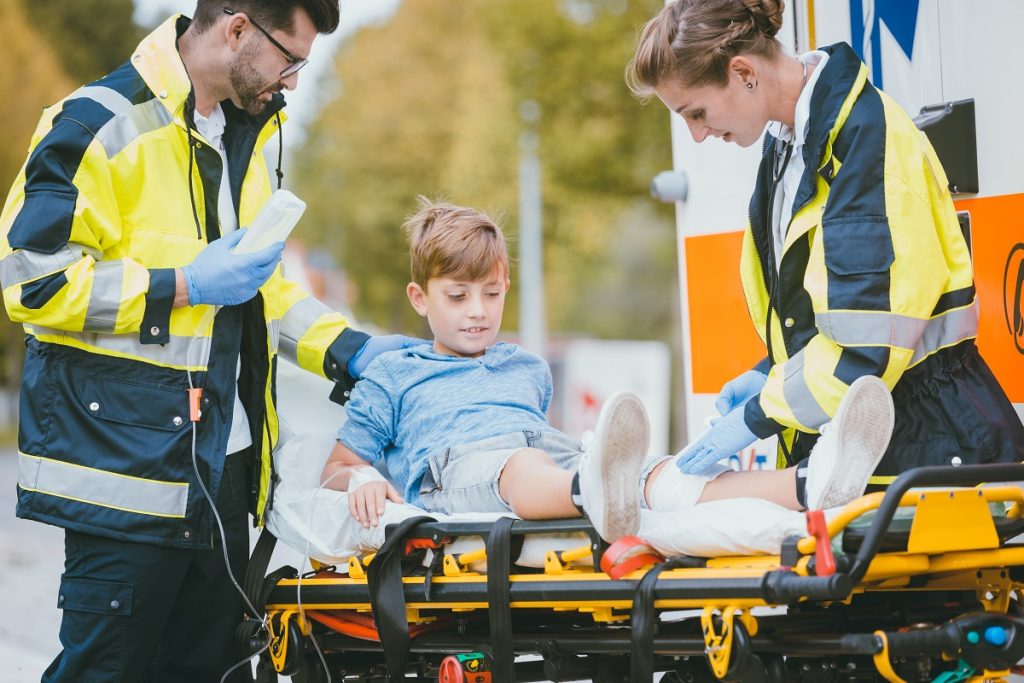- First aid offers crucial immediate care in emergency situations, with diverse skills like CPR and AED usage.
- Training in various first aid types, including mental health and pediatric first aid, enhances effectiveness.
- A career in first aid opens up diverse job opportunities, such as health and safety officers or emergency response team members.
- Pursuing a first aid career requires finding a training program that best suits your educational goals and budget.
If you’re passionate about education and helping people, then pursuing a career in first aid may be an ideal choice for you. This field is rapidly growing as more and more people are recognizing the importance of being trained in first aid. First aid professionals play a crucial role in emergency situations, as they are the first responders on the scene. This blog post will cover everything you need to know about pursuing a career in first aid, including the benefits, required training, and potential job opportunities.
Why First Aid Is Important
Before diving into the intricacies of pursuing a career in first aid, it is crucial to first understand and appreciate its significance and purpose. First aid refers to the initial care provided to individuals who have been injured or fallen ill prior to the arrival of professional medical assistance. This immediate assistance can make all the difference in saving someone’s life. First aid training equips individuals with the necessary skills and knowledge to act quickly and efficiently in emergency situations, increasing the chances of survival for those in need. Here are some skills that you need to know for administering basic first aid:
Assessing the Situation
Assessing the situation is the first critical step in administering first aid. It involves quickly and accurately evaluating the victim’s condition and determining the appropriate course of action. This could include calling for emergency medical services, moving the victim to a safe location, or starting immediate treatment, depending on the severity and type of injury.
Administering CPR (Cardiopulmonary Resuscitation)

Administering CPR is another essential skill in first aid. CPR is a life-saving procedure performed when a person’s heartbeat or breathing has stopped, as can be the case with a heart attack or drowning. It involves chest compressions combined with artificial ventilation (rescue breaths) to maintain circulation and oxygenation, thereby preserving intact brain function until further measures to restore spontaneous blood circulation and breathing are initiated.
Knowing How To Use an AED (Automated External Defibrillator)
Mastering the use of an AED is an integral part of first aid training. An Automated External Defibrillator, or AED, is a device used to deliver a controlled electric shock to a person experiencing cardiac arrest. This shock can potentially restore a regular heart rhythm, buying crucial time until professional medical help arrives. While an AED has user-friendly features and clear instructions, formal training helps ensure you can operate it effectively and confidently during high-stress situations.
Train in Different Types of First Aid
To be genuinely effective in emergency situations, it’s essential to train in different types of first aid. Not all emergencies are the same – they can range from minor injuries like cuts and sprains to severe situations like heart attacks and strokes. By training in different types of first aid, you’ll be equipped to respond to a wide variety of emergencies. Here are other emergency situations that you need to train:
Mental Health
Mental health emergencies are just as crucial to address as physical ones, and this is where mental health first aid training comes into play. This training helps you identify, understand, and respond to signs of mental illnesses and substance use disorders. It prepares you to offer initial help to a person developing a mental health problem or experiencing a mental health crisis until appropriate professional service arrives or the situation is resolved.
Disaster Response

Natural disasters can strike at any time and often require immediate first aid response. Whether it’s earthquakes, hurricanes, or wildfires, knowing how to provide first aid in a disaster situation is essential. Disaster response training teaches you how to assess the scene, manage traumatic injuries, and prioritize treatments in an emergency setting.
Pediatric First Aid
Children require a different approach when it comes to administering first aid. They are more prone to accidents and injuries, and their bodies respond differently to treatments than adults. Pediatric first aid training teaches you how to recognize and respond appropriately to childhood emergencies, including choking, allergic reactions, and burns. With this training, you’ll be able to provide appropriate care for children in need.
Job Opportunities
After completing your training in various types of first aid, a wide array of job opportunities become accessible. Careers in this field are not limited to becoming a first aid instructor or paramedic but also open doors to roles in emergency response teams, schools, and outdoor adventure companies.
You could also work in a corporate environment as a health and safety officer. Furthermore, the skills you gain are highly transferable and valued in many professions, enhancing your resume and increasing your employability across multiple sectors.
In some cases, first aid training may even be a requirement for specific jobs, such as lifeguards, teachers, and childcare providers. By pursuing a career in first aid, you’ll have the potential to make a positive impact on people’s lives while also having a fulfilling and rewarding job.
Pursuing a career in first aid is an excellent choice if you’re passionate about education and helping people. It’s a rapidly growing field that offers numerous job opportunities, and the career outlook is strong. If you’re interested in doing first aid, research different training programs and organizations that interest you. Find a program that fits your schedule, budget, and educational goals, and start your journey today.

